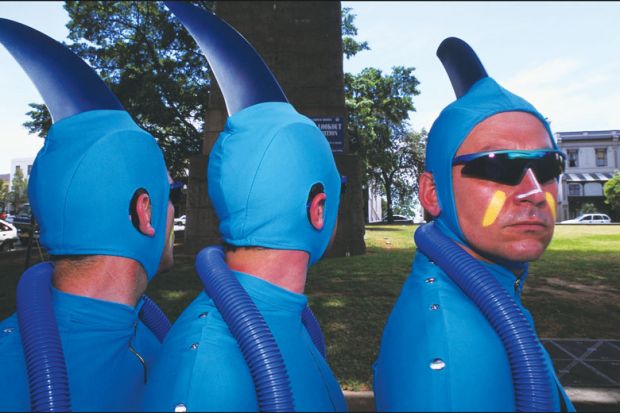Staff reductions in Australian universities are exposing fault lines in institutions’ employment practices, with cuts among permanent employees making headlines while the mass shedding of casuals and contractors barely rates a mention.
Some universities have announced redundancy programmes to help plug huge pandemic-induced revenue shortfalls, outlining exactly how many ongoing staff they expect to axe. But few have offered even broad estimates of their much larger cuts to insecurely employed staff.
Tom Barnes, an economic sociologist at the Australian Catholic University (ACU), said the institution had claimed that no job cuts were under way. Anecdotal evidence suggested this was not so where casual and fixed-term staff were concerned.
“We think they are being shed in large numbers, but we don’t have hard figures,” said Dr Barnes, a member of the National Tertiary Education Union (NTEU) branch committee. “We know fixed-term contracts have not been renewed, and expected work among casuals has not been forthcoming.”
He said ACU had outlined plans to save A$42 million (£23 million) in staff and salary costs, which “apparently includes cutbacks to fixed-term and casual staff. If you’re saying they’re not job cuts, then you’re effectively saying that the fixed-term and casual workforce are not real employees.”
In a document charting its savings plans, UNSW Sydney devoted a page to its proposal to save A$75 million by cutting the equivalent of 493 full-time ongoing staff. The university has invited expressions of interest in voluntary redundancies ahead of a possible round of forced dismissals.
Yet just two bullet points cover A$142 million in cuts to UNSW’s faculties and divisions, partly if not substantially achieved through reductions in casual and contractor numbers. Vice-chancellor Ian Jacobs would not quantify these reductions, but said they had not been as steep as expected.
The UNSW Casuals Network said the redundancy programme would be the “tip of the iceberg”, with far more casual and fixed-term workers set to lose jobs in the looming restructure.
A network member, who asked not to be named, said concrete figures were “hard to get”. The group had sought details of UNSW’s spending on casual staff, to gauge how many had vanished, but management had not provided the figures.
The University of Sydney, which professed a guiding principle “to minimise the impact on jobs as much as possible”, said it expected to save A$93 million by trimming casual staffing budgets. It declined to estimate how many people would lose work as a consequence.
The little information available elsewhere suggests that casual and fixed-term employees are suffering the lion’s share of job losses during the pandemic. The Group of Eight said it expected its member universities to lose 6,700 staff in the coming months, with researchers on fixed-term contractors comprising up to 4,400 of them.
The NTEU’s Victorian division said 5,869 of the 7,427 job losses tallied so far in the state’s universities had involved insecurely employed staff, mostly casuals. The figures were far from exhaustive, coming mainly from just two institutions.
The division’s assistant secretary, Sarah Roberts, said other universities had not provided detailed figures. “The record-keeping is appalling,” she said.
“There’s this sort of cognitive dissonance in higher education about what real jobs are. People talk about permanent jobs as the real jobs. Fixed-term and casual employment is this sort of hidden thing that we don’t really count.”
Register to continue
Why register?
- Registration is free and only takes a moment
- Once registered, you can read 3 articles a month
- Sign up for our newsletter
Subscribe
Or subscribe for unlimited access to:
- Unlimited access to news, views, insights & reviews
- Digital editions
- Digital access to THE’s university and college rankings analysis
Already registered or a current subscriber? Login












